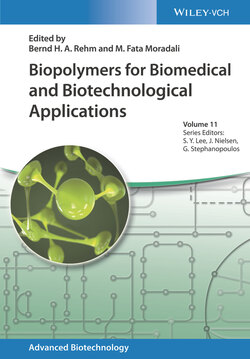Читать книгу Biopolymers for Biomedical and Biotechnological Applications - Группа авторов - Страница 17
1.4.2 Systemic Toxicity (Acute, Subacute, Subchronic, and Chronic)
ОглавлениеSystemic toxicity is a potential adverse generalized response including organ or organ system effects that can result from the absorption, distribution, and metabolism of leachates from the device or its materials to parts of the body that are not in direct contact with the device or material. The type of test recommended per ISO 10993 is dependent on the duration of exposure to the patient:
Acute toxicity is defined as an adverse systemic effect occurring at any time within 72 hours after single, multiple, or continuous exposures of a test sample for 24 hours.
Subacute toxicity is defined as an adverse effect occurring after multiple or continuous exposure between 24 hours and 28 days. The term subacute might be somewhat misleading since generally “sub” is understood as less, and subacute would, based on this logic, be considered as less than acute. Since this term is confusing, it is best to consider subacute toxicity as any adverse effects occurring within a short‐term repeated exposure during a systemic toxicity study. This is generally done with time intervals between 14 and 28 days for intraperitoneal injection studies; intravenous studies are generally defined as treatment durations or exposure of more than 24 hours but less than 14 days.
Subchronic toxicity is any adverse effect occurring after the repeated or continuous administration of an extract of a material or device for (typically) 90 days in rodents or in other species for duration of exposure that does not exceed 10% of the life span of the test animal. Subchronic intravenous studies are generally defined as treatment durations of 14–28 days for rodents and non‐rodents, respectively.
Chronic toxicity is any adverse effect occurring after the repeated or continuous administration of a test sample for a major part of the test animal's life span; these are usually studies with duration of 6–12 months.
The main consideration point for systemic toxicity and biopolymers is regarding the dose. The standard biocompatibility test is performed on the basis of surface area or mass to volume; these ratios are spelled out in Table 1.4.
Table 1.4 Standard device extraction ratios used for biocompatibility (per ISO 10993‐12).
| Thickness (mm) | Extraction ratio |
|---|---|
| <0.5 | 6 cm2/ml |
| 0.5–1.0 | 3 cm2/ml |
| >1.0 | 3 cm2/ml |
| >1.0 (elastomeric devices) | 1.25 cm2/ml |
| Irregular solid devices | 0.2 g/ml |
| Irregular porous devices | 0.1 g/ml |
As Table 1.4 points out, the more surface area or mass a device has, the more extraction volume is added to the device during sample preparation. This approach works well for solid, stable materials such as metals and hard plastics but can be challenging with materials such as biopolymers, especially if they are produced with a porous microarchitecture or are biodegradable.
Another giant gap in the approach that uses surface area or mass for calculating the extraction volume is that it does not take into consideration the actual dose that a single patient will be exposed to. Typically, each biological test requires a certain minimal volume of fluid to run, and because of this limitation the sample amount needed for the testing is directly portioned to the logistics demanded by the test itself and not on the actual clinical use of the device. For example, let us say during a surgical procedure, a patient will only receive one PLA screw that is 0.5 g in weight. For the biocompatibility assessment of the screw, a standard subacute study was run. For testing, up to 112 screws were included in order to conform to the required sample volumes that were repeatedly dosed to the test animals, resulting in an exposure that is in actuality multiple times the clinical mass to body weight dose. This leads to a vast overestimation of the exposure risks of the biopolymer.
A better way to design the different systemic toxicity studies of biopolymers is based on dose per body weight of the patient. The standard weights per patient population are described in Table 1.5. In this case, one would determine the appropriate worst‐case target population for the medical device or material and determine a dose per kg of body weight based on that criterion. Subsequently, the testing would be done with a sample size that would expose the specific animal to a safety‐factor‐corrected dose that represents the appropriate clinical dose.
Table 1.5 Standard body weight parameters.
| Population | Standard body weight used (kg) |
|---|---|
| Adult man | 70 |
| Adult woman | 58 |
| Children | 10 |
| Neonates (<1 yr) | 3.5 |
An example of a test design according to the clinical dose approach would be as follows: a surgical procedure where up to two screw PLA screws (each weighing 0.5 g) will be implanted into a patient, the worst‐case exposure per patient will be 1 g of PLA, and the specific clinical prescribed doses are outlined in Table 1.6.
Table 1.6 Example of specific population doses for 1 g PLA screw.
| Population | Gram of screw per kg body weight | With 10X safety factor |
|---|---|---|
| Adult man | 0.01 | 0.14 |
| Adult woman | 0.02 | 0.17 |
| Children | 0.10 | 1.00 |
| Neonates (<1 yr) | 0.29 | 2.86 |
In a rat subchronic study, if the worst‐case target population is adult women and the test rat weighs 500 g, the dose would be calculated as follows:
Desired ratio with safety factor = 0.17 g of screw per body weight
This approach would ensure an accurate exposure dose to the animal and would present a more clinically relevant evaluation for the risks of systemic toxicity for the device.
